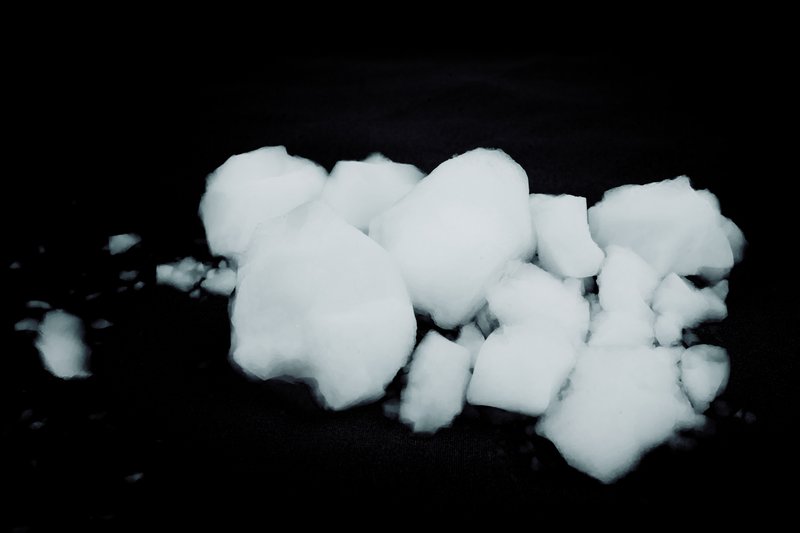Aerogel Unveiled: Nanoscale Thermal Shields Revolutionizing Protection from Space to Everyday Life
Aerogel—the lightest solid on Earth, with up to 99% porosity and thermal conductivity as low as 0.013 W/(m·K)—is transforming global industries through its nanoporous architecture that blocks conduction, convection, and radiation. This in-depth guide dissects sol-gel synthesis, supercritical and ambient-pressure drying breakthroughs (cutting costs 90%), and high-temperature variants enduring 1,300°C. From EV thermal-runaway barriers and LNG tank insulation to passive-house facades and deep-sea probes, aerogel's commercialization—driven by Chinese atmospheric-drying innovations—propels a market toward $20 billion by 2030, forging a safer, greener future.

In a world grappling with energy crises and extreme environments, aerogel emerges as a quiet revolutionary. Comprising over 98% air trapped in a nanoscale web, this "frozen smoke" defies heat transfer physics, offering insulation that outperforms vacuum panels while weighing less than a whisper. Invented in 1931 by Samuel Kistler, aerogel has evolved from fragile lab samples to robust, scalable products safeguarding spacecraft, batteries, and homes. As carbon-neutral imperatives intensify, its ability to minimize material use while maximizing protection positions it as the ultimate thermal guardian.
The Nanoscale Fortress: How Aerogel Defeats Heat at Its Core
Aerogel's magic lies in its 10–50 nm pores and skeletal strands thinner than 5 nm, creating a structure where air is immobilized. Heat faces a triple lockdown:
- Convection Collapse: Pores smaller than air's 70 nm mean free path trigger the Knudsen effect—molecules bounce off walls instead of each other, slashing gaseous conductivity below 0.004 W/(m·K).
- Conduction Interruption: With solid content under 2%, phonon pathways fracture endlessly, reducing skeleton transfer to 0.001 W/(m·K).
- Radiation Deflection: Nanoparticles scatter infrared via Mie resonance, while doped opacifiers (e.g., carbon black) absorb 85% of radiative flux.
Result: overall conductivity dips to 0.013–0.018 W/(m·K), enabling 5 mm aerogel to match 100 mm rock wool.
Crafting the Impossible: From Sol-Gel to Scalable Mastery
Precision begins with the sol-gel process. Using tetraethyl orthosilicate (TEOS) in ethanol, ammonia catalyzes hydrolysis and polycondensation, weaving Si-O-Si chains into a wet gel. A mere 0.1 pH shift or 2°C variance alters pore uniformity by 15%—demanding robotic control for consistency.
Drying defines destiny:
- Supercritical CO₂: At 31°C and 7.3 MPa, solvent phase-changes without surface tension, yielding pristine monoliths with 1,000 m²/g surfaces. Yet early setups cost $8 million per line.
- Ambient-Pressure Revolution: Chinese innovators (e.g., Nano High-Tech) employ trimethylchlorosilane modification and ethanol exchange, curbing capillary forces 80%. Costs plummet to 1/20th, cycles shrink to hours, and output soars—enabling ¥60/kg blankets.
Reinforcement counters brittleness: University of Science and Technology of China integrates aramid nanofibers (<100 nm diameter), boosting compressive strength from 0.5 MPa to 2.5 MPa at 0.018 W/(m·K). This "flexible armor" is pivotal for dynamic applications.
Dual Titans: Silica and Alumina Aerogels in Action
Silica Aerogel: Versatile Sentinel for Everyday Extremes
The workhorse variant, silica aerogel excels below 650°C:
- LNG Guardians: In −196°C tanks, 5 mm blankets hold outer walls at −5°C, cutting boil-off 60% versus polyurethane.
- EV Lifelines: 50–100 g per pack extends thermal-runaway escape from 5 to 30+ minutes (UL94 V-0 certified). Water-glass feedstocks have driven Chinese costs from ¥200/kg (2020) to ¥60/kg, lifting building penetration from 0.3% to 2.1%.
Alumina Aerogel: High-Temperature Titan
For furnaces exceeding 1,000°C, Al₂O₃ shrinks just 3% at 1,200°C—10× better stability than ceramic fibers. NASA's X-59 uses composites for Mach 1.4 flights, capping cabin walls at 60°C. Domestic propylene oxide gels and fiber reinforcement yield 1.2 MPa strength at 1,300°C, with BASF collaborations trimming costs 40%.
Commercial Odyssey: From Lab Bottlenecks to Market Dominance
Aerogel's scale-up surmounted three chokepoints:
- Equipment Localization: Precision valves maintain ±0.05 MPa, slashing line costs from $7M to $1.2M.
- Thermal Resilience: Zirconia doping elevates silica limits to 1,000°C.
- Smart Manufacturing: AI fine-tunes sol ratios, tightening density variance to ±2% and yields to 95%.
Oil & Gas Empire (60%+ Market Share)
From Siberian −50°C lines to Middle Eastern 50°C pipelines, aerogel adapts seamlessly. 2025 projections: ¥5.44 billion market, equating to 20 million tons CO₂ saved—like planting 1.2 million trees.
Building Renaissance
In passive-house Europe, 3 mm coatings yield U=0.15 W/m²·K, shrinking systems 70%. Chinese retrofits raise winter indoors 5°C, trim AC use 35%. Lifecycle savings exceed ¥200/m² over 15 years, offsetting 3–5× upfront premiums.
Extreme Frontiers
SiC aerogel (1,600°C) armors re-entry capsules against 2,000°C plasma. Superhydrophobic variants (150° contact) stabilize 6,000 m deep-sea probes.
Tomorrow's Shield: Aerogel in Daily Life
Consumer infiltration accelerates:
- Home Safety: Furniture-integrated blankets withstand flames 60 minutes.
- Wearables: Flexible layers cut −30°C heat loss 30%, breathe freely.
- Electronics: 0.5 mm sinks drop 5G chip junctions 15°C.
Annual 20% cost declines—via inorganic sources and ambient drying—fuel a $20 billion market by 2030.
Conclusion: Nanopores as Humanity's Thermal Ally
Aerogel embodies elegant restraint: vast voids yielding immense control. From orbital habitats to urban apartments, it minimizes matter while maximizing safety and efficiency. In our warming world, this nanoscale sentinel isn't just material—it's a manifesto for sustainable ingenuity, ensuring comfort endures amid chaos.
LATEST NEWS
Why Does Metal Feel Cold and Wood Feel Warm at the Same Room Temperature? Unveiling the Magic of Thermal Conductivity!
2025-11-20
Innovative Aerogel Pipe Insulation Boosting Efficiency in Energy Industries
2025-11-17
Ordering and Specification Guidance for Aerogel Sheet and Pipe Insulation Products
2025-11-17
Luminescent Concrete Transforms Global Architecture with Light and Design Freedom
2025-11-13
Aerogel: The Ultralight Revolution – Transforming Industries with Unmatched Versatility
2025-11-11
